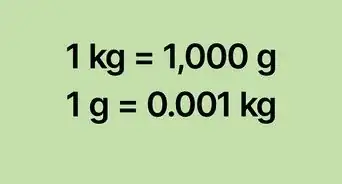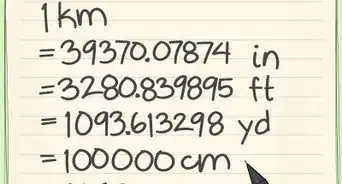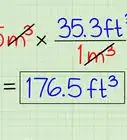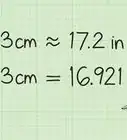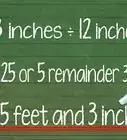wikiHow is a “wiki,” similar to Wikipedia, which means that many of our articles are co-written by multiple authors. To create this article, 27 people, some anonymous, worked to edit and improve it over time.
This article has been viewed 454,244 times.
Learn more...
There are many tools for converting inches to centimeters on the web, all of which will tell you that 1 inch = 2.54 cm. However, in academic situations, this information is sometimes insufficient, as many teachers will require you to show your work. Luckily, converting inches to centimeters using algebraic steps and proper unit cancellation is a fairly simple task. If your initial measurements are in inches, the process is as simple as plugging your values into the blank space in the simple formula provided in this article and following the calculations. See Step 1 below to get started.
Steps
Inches to Centimeters Converter
Converting via Simplified Process
-
1Write your length value in inches. Either use the value you have been given (as part of a homework problem, etc.) or use a ruler or tape measure to measure the length you wish to convert.[1]
-
2Multiply your length value by 2.54. One inch is equal to roughly 2.54 centimeters, so converting inches to centimeters means multiplying a value in inches by 2.54.[2]Advertisement
-
3Label your new value as centimeters. Don't forget to include the correct label on your new value. If you're doing schoolwork, using the wrong label can result in points deducted form your answer or even your answer being marked as wrong.[3]
Converting via Detailed Process
-
1Ensure your measurement is in inches. This may seem like a no-brainer, but it's important to remember, especially when dealing with mixed measurements of feet and inches, which are often denoted by apostrophe markings, like this: 6'2". Remember that in such measurements the number marked by the single apostrophe is feet, each of which contains 12 inches.[4]
- For example, in the example above, 6'2", we would multiply 6 feet by 12 inches/foot to get 72 inches total. To this we'll add the extra two inches from our measurement to get a final value of 74 inches.
-
2Insert your value (in inches) into the inches to centimeters conversion factor below.
____ in* 2.54 cm
1in= ? cm - This conversion factor will also get you the correct units. Note that the "inches" label in the denominator of the conversion factor cancels with the "inches" label of the value you plug in, leaving only the "centimeters" label in the numerator of the conversion factor for your final answer.
- Let's try plugging our example of 74 inches into the conversion factor.
- (74 inches × 2.54 centimeters)/(1 inch)
- (187.96 inches × centimeters)/(1 inch)
- We cancel the "inch" labels because they appear once in both the numerator and the denominator, leaving us with a final answer of 187.96 centimeters.
-
3Simply use a calculator if you don't need to show your work. If you're not interested in showing your work for academic purposes, all you need to do to convert inches to centimeters is multiply your inches value by 2.54 on a calculator. This is essentially the same as performing the calculations in the formula above, and will get you the same result in centimeters.[5]
- For example, if we want to know the value of 6 inches in centimeters, we would just multiply 6 × 2.54 = 15.24 cm.
-
4For on-the-fly mental calculations, round your conversion factor to an easier value. If you don't have a calculator handy, it's still possible to approximate an inches-to-centimeters conversion by using a "rounder" conversion factor to make mental multiplication easier. Instead of using the precise conversion factor of 2.54 centimeters/1 inch, use 2.5 centimeters/1 inch. Note that this will cause your final answer to be slightly inaccurate, so this method is only suitable for situations in which loose estimations are acceptable.
- For instance, let's convert 31 inches to centimeters using this quick estimation method:
- 2.5 × 30 = 75. 2.5 × 1 = 2.5
- 75 + 2.5 = 77.5 centimeters.
- Note that if we had used the precise conversion factor of 2.54 centimeters/1 inch, our answer would have been 78.74 centimeters. These two answers differ by 1.24 centimeters, or about 1.5%.
- For instance, let's convert 31 inches to centimeters using this quick estimation method:
Community Q&A
-
QuestionTo find the number of centimeters in 10 inches, by what do I multiply the number of inches given (10)?
 Community AnswerThere are 2.5 centimeters in 1 inch. So you would multiply the number of inches given, in this case 10, to get the number of centimeters, 25.
Community AnswerThere are 2.5 centimeters in 1 inch. So you would multiply the number of inches given, in this case 10, to get the number of centimeters, 25. -
QuestionHow long is 22 cm in inches?
 Community AnswerJust divide 22 by 2.54. 22/2.54 = 8.66.
Community AnswerJust divide 22 by 2.54. 22/2.54 = 8.66. -
QuestionWhat is 1 3/4 inches in millimeters?
 DonaganTop AnswererMultiply inches by 25.4.
DonaganTop AnswererMultiply inches by 25.4.
References
About This Article
1 inch is equal to 2.54 centimeters. To convert from inches to centimeters, simply multiply the number of inches by 2.54. For instance, if you’ve measured an object that’s 35 inches long and you want to know how many centimeters it is, multiply 35 by 2.54 to get 88.9 cm. To convert back to inches, divide the number of centimeters by 2.54. If you want to show your work in a little more detail, use the formula I (inches) x 2.54 cm/1 inch = X cm. For instance, if you’re converting 74 inches into cm, use the equation 74 in x 2.54 cm/1 in = X cm. Cancel out the inches to get 74 x 2.54 cm = X cm, which gives you the result X = 187.96 cm. Always make sure to label the numbers you’re working with in inches and centimeters so that you can keep track of which is which. If you want to learn how the conversion works, keep reading the article!

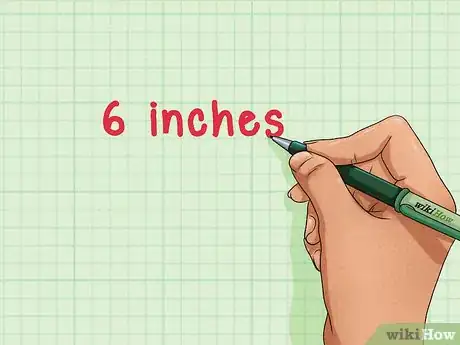
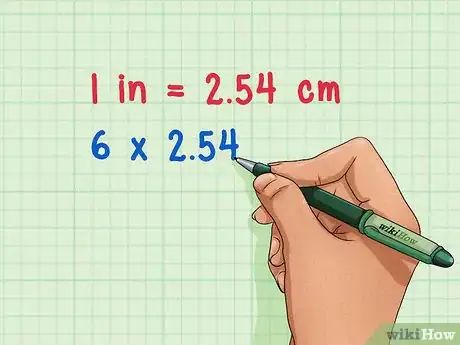
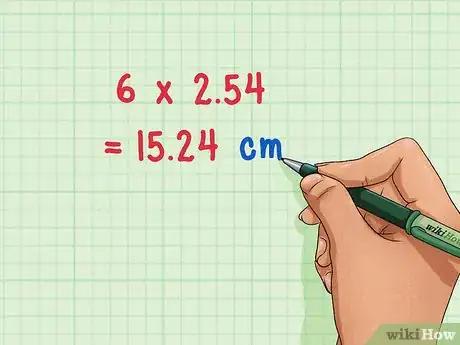

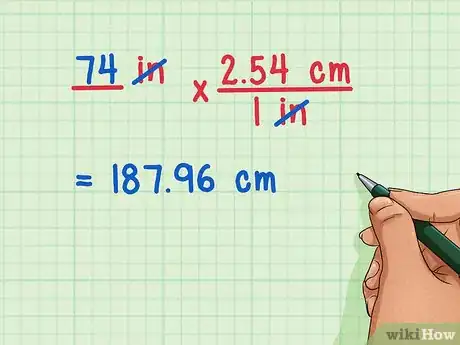


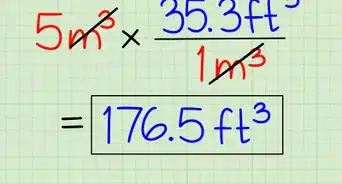

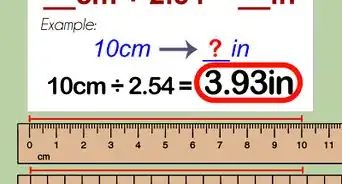
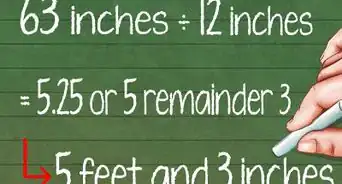
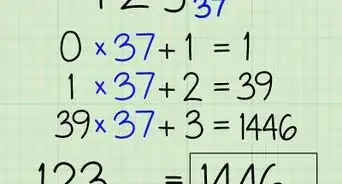
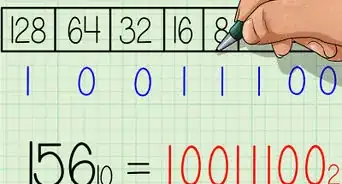
-to-Grams-(g)-Step-8-Version-5.webp)
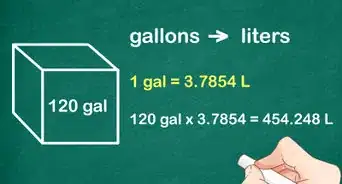
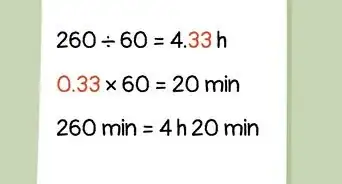
-to-Fahrenheit-(°F)-Step-6-Version-2.webp)
